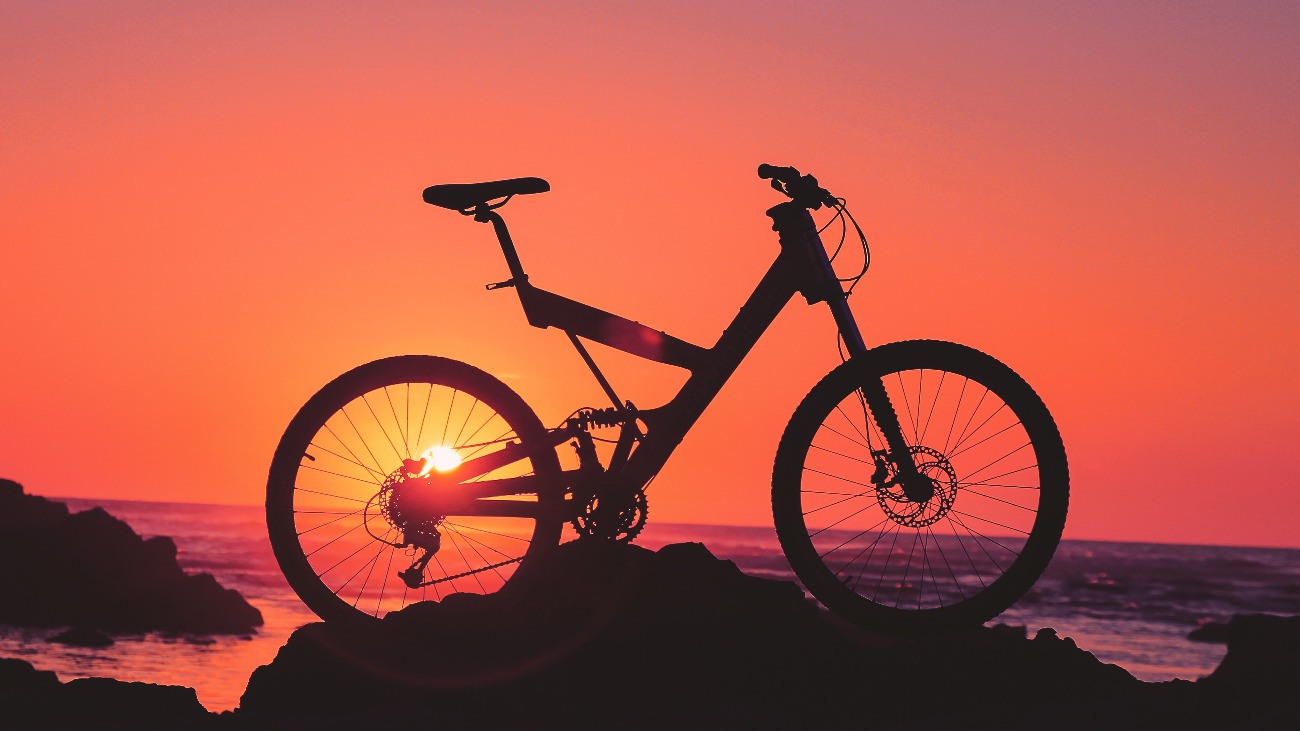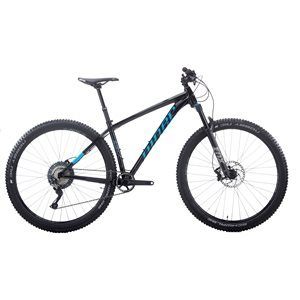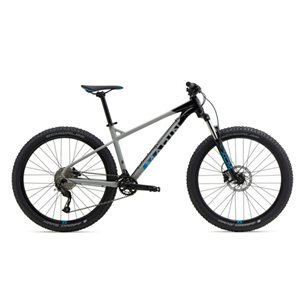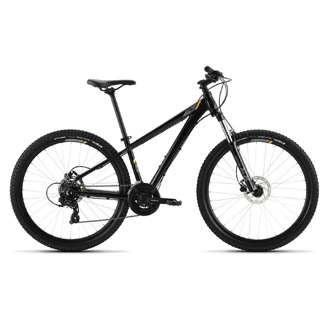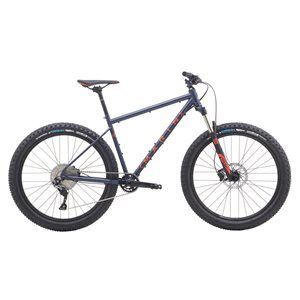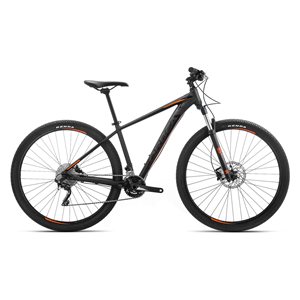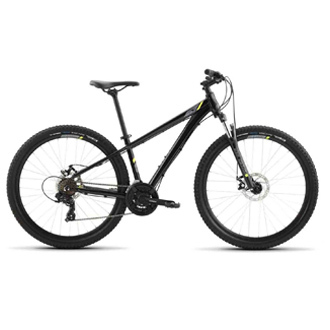Time for a new mountain bike? We've done the research to uncover a few of the most popular bikes in each of the common price brackets.
Mountain bikes are expensive; there’s no getting around that. It’s an unfortunate truth that quality must be compromised in some areas for a mountain bike to be considered a good budget buy.
The amount of compromise depends on your budget, and the areas that you’re willing to compromise should depend on your expected usage.
Why spend hours upon hours looking through the available options, when we’ve already done the hard work for you?
This article is part of a series of articles that take a closer look at budget mountain bikes within standard budget price brackets.
We took a good hard look at what budget mountain bikes are available, listened to community feedback, and awarded only the very best value mountain bikes a spot on this list.
The Best Budget Mountain Bikes
After countless hours of research, testing, and receiving feedback from our readers, we’ve settled on a handful of bikes that we think deserve to be called the best budget mountain bikes.
Choosing from our list of recommended best value mountain bikes ensures you’ll be getting excellent value for money, and you can rest assured we’ve carefully checked out the spec of each bike to avoid any components with known issues.
Starting at the top end of budget mountain bikes and moving towards the cheaper mountain bikes, let’s get underway.
- 1 The Best Budget Mountain Bikes
- 2 The Best Mountain Bikes Under $1500
- 3 How We Chose The Best Mountain Bikes Under $1500
- 4 The Best Mountain Bikes Under $1000
- 5 How We Chose The Best Mountain Bikes Under $1000
- 6 The Best Mountain Bikes Under $500
- 7 How We Chose The Best Mountain Bikes Under $500
- 8 Our Guide To Buying Budget Mountain Bikes
- 8.1 Brief History of Mountain Biking
- 8.2 What To Look For In a Budget Mountain Bike
- 8.2.1 Wheel Size
- 8.2.2 Frame Size
- 8.2.3 Suspension
- 8.2.4 Materials
- 8.2.5 Components
- 8.2.6 Disc brakes or calipers?
- 8.2.7 Derailleurs to Cassette
- 8.3 Types of Mountain Bike Riding
- 8.3.1 Cross-country
- 8.3.2 Trail
- 8.3.3 All-mountain or Enduro
- 9 Get Out There And Get Dirty
The Best Mountain Bikes Under $1500
To many casual or beginner riders, even $1500 seems extortionate for a mountain bike. In truth, this is still well within what we’d define as a budget purchase. For $1500, you can get a fairly decent entry-level mountain bike. It’s around this range that you start to notice the odd carbon fiber frame bike here and there from lesser-known manufacturers. At this range, we’d recommend you look at the following options first.
Niner Air 9 SLX Jenson USA Exclusive Build
Niner’s Air 9 frame is nothing short of iconic. This Jenson exclusive spec features a 1×11 Shimano SLX M7000 drivetrain that shifts as smooth as butter and is well known as one of the most reliable around. The frame itself is a hydroformed aluminum frame that is light and responsive. Hydraulic disc brakes (Shimano M6000) deliver crisp and linear braking that feels entirely natural for the rider. The Niner Air 9 is already one of our favorite entry-level mountain bikes, and the Jenson exclusive spec makes this model that extra bit more special.
Marin Pine Mountain 1 Bike
Labeled by MTBR as the “the perfect bike for all-day rides”, we think this Marin Pine Mountain 1 is wholly deserving of a place on anyone’s list. It’s a steel-framed hardtail, but doesn’t feel heavy to maneuver at all. A Rock Shox Recon fork takes care of business up front, and the 27.5″+ oversized tires grip as well as you’d imagine. For well under $1500, this truly is a fantastic mountain bike. We’d recommend this to beginners who are just getting started and want a little cash left over for potential future upgrades.
How We Chose The Best Mountain Bikes Under $1500
At the $1500 price bracket, you’ve got one foot out of the budget category and firmly into the entry-level category. As more manufacturers push to make affordable mountain bikes, there are more choices and better bikes available to choose from. In all honesty, it’s probably best to avoid the lure of carbon fiber frames at this range as things stand. Carbon fiber frames are expensive, and buying a $1500 mountain bike made of carbon fiber will likely mean you sacrifice significant quality in other areas. We’ve chosen the best mountain bikes under $1500 on the price to performance ratio of the frame and drivetrain components. These bikes are a perfect fit for beginners or intermediate riders on a budget. All Best Mountain Bikes Under $1500 reviews.
The Best Mountain Bikes Under $1000
In the $1000 bracket, carbon frames become much less commonplace. Aluminum is king here. At this range, you can almost completely rule out finding a respectable full suspension mountain bike, so hardtails are still the way to go. High-quality full-suspension doesn’t come cheap, and you’d be sacrificing a lot of quality elsewhere. Instead, here’s what we’d recommend:
Marin San Quentin 1 Mountain Bike
The Marin San Quentin is a hardtail that can handle anything you throw at it. At under $1000, it’s an absolute steal in terms of price to performance. The SR Suntour 120mm fork up front works miracles to handle the even toughest terrains, and a Shimano 9×1 drivetrain keeps you going against all odds. Marin called in freeride legend Matt Jones to help with every step of this bike’s development, which is quite the stamp of approval. We’re still astounded you can pick this up for less than a thousand dollars since it has the feel of a bike twice it’s price.
Orbea MX 10 29″ Mountain Bike
The Orbea MX 10 features a lightweight 6061 aluminum frame, a 20 speed Shimano drivetrain, Shimano hydraulic disc brakes, and a Rock Shox suspension fork, all for under $1000. This MX 10 offers incredible value for money. The 29″ wheels provide excellent control over a vast range of terrains. Though we usually leave the appearance of bikes down to the individual, since tastes vary, you have to admit this is one of the sleekest budget mountain bikes out there. Under a thousand dollars, it’s an absolute steal.
How We Chose The Best Mountain Bikes Under $1000
As with most budget price ranges, you get more for your money with a hardtail aluminum frame. Carbon fiber frames and full-suspension bikes are often just too expensive to fit in this bracket, and the more essential components then suffer from a lack of quality. At this range, you should prioritize a fun, safe, and well-balanced bike that is light to handle and will last for years to come. We chose our top picks for mountain bikes under $1000 based on these factors, and we’re confident our picks offer the best value for money around. All Best Mountain Bikes Under $1000 reviews.
The Best Mountain Bikes Under $500
Buying a mountain bike under $500 is a minefield. In higher ranges, you can be sure that sticking to respected brands will get you a reasonable mountain bike even in the worst-case scenario. Under $500, that’s not the case. There are some terrible bikes out there under $500; making the correct decision here is even more critical than it would be if you were spending more money (mad right?!). Let’s have a look at some shining examples of excellent mountain bikes under $500:
Raleigh Bicycles Talus 3 Mountain Bike
The Talus 3 mountain bike from Raleigh is one of the best budget mountain bikes around. Since it’s recently crept under the $500 mark, it easily tops our list in this price bracket. Some improvements on the previous Talus 2 include an upgraded SR Suntour suspension fork, a slightly better Shimano M310 rapid-fire shifter and some other tweaks to the rear derailleur and the cassette to mention a few. The result is a better bike than the Talus 2, though even we struggle to put our finger on exactly why; beginners may want to consider the Talus 2 and save a few bucks.
Raleigh Bicycles Talus 2 Mountain Bike
Despite the Talus 3 now entering this bracket, the Talus 2 still well and truly belongs here. It remains one of the best budget mountain bikes at this price range. The combination of quality components and Raleigh’s fantastic custom-formed aluminum frame makes it a step above most other mountain bikes available under $500. For beginners, it’s unlikely that you’ll notice much of a difference between the Talus 2 and the Talus 3 outside of the rapid-fire shifter, so you might be able to save a few bucks by opting for the 2.
How We Chose The Best Mountain Bikes Under $500
Choosing a mountain bike under $500 is easy if you know what to look for, but for a majority of buyers, it can be a minefield. Our biggest recommendation is to stick with respected brands. You’ll never find an extremely high-quality bike in this price range, but respected brands do make very respectable bikes that you can get for under $500. Good quality drivetrain components and aluminum frames are the two most important things here, and our selections keep that in mind. Things get a lot better in the next bracket up, but those on a tight budget can still find the odd gem for less than $500. All Best Mountain Bikes Under $500 reviews.
Our Guide To Buying Budget Mountain Bikes

It isn’t uncommon to suffer some pretty severe sticker shock when you are first browsing the market for a decent quality mountain bike. Whatever the reason for your hunt, don’t despair when you see price tags in a range you may expect to pay for a good used car. With some thought, you will be able to find an excellent affordable mountain bike in a price range that you can justify.
At the other extreme, don’t fall for the value-priced floor models at the local department store, either. You may think you’re getting a good deal on a starter bike for a few hundred bucks, but you are almost definitely setting yourself up for disappointment.
If you ever take one of those department store mountain bikes on the trails, you’ll soon figure out why they’re so cheap. Without a high-quality front suspension fork, a lightweight aluminum frame, and decent drivetrain components, your few hundred bucks will soon look poorly spent.
It’s worth the extra investment to get a reasonable mountain bike, one that is designed specifically for the unique challenges of riding off-road on rough terrain.
Brief History of Mountain Biking
In the early days of biking, equipment was sturdy and usually built using heavy, strong materials. If you go back a hundred and fifty years, bikes weren’t specifically built for off-road riding on mountain trails at all.
One of the earliest known efforts to make bicycles into “mountain bikes” involved an army group, the 25th Infantry Bike Corps, who outfitted bicycles for carrying equipment over rough trails in 1895.
The group tested their bicycle army transport unit by first riding round-trip from Missoula, Montana to Yellowstone National Park, and then from Missoula to St. Louis, Missouri! This initial effort was cross-country riding at its finest, over a century ago.
Despite that, many mountain bike enthusiasts consider Marin County, California to be the modern birthplace of the mountain bike. It was there that groups of young cycle enthusiasts begin competing in the 1980s to create bikes suited for off-road use in the mountain trails.
Soon technology began to catch up with the new dirt biking passion. Equipment and gear became made explicitly for the more extreme needs of mountain biking. A new market was born, and in the past four decades since the Marin County movement of the 80s, mountain biking has grown exponentially. It now serves a considerable sector of the bicycle business with stronger and lighter drivetrains, wheels, and frame materials.
What To Look For In a Budget Mountain Bike

Now that you have a rough idea of how mountain bikes came to be, we’ll take a closer look at the aspects that make them so well-loved.
Wheel Size
As mountain bikes have developed over the decades, manufacturers have settled for the most part on three wheel sizes: 26, 27.5, and 29-inches. The 26-inch wheel has long dominated the market as the standard since the creation of the mountain bike, but the introduction of the 29er broadened the potential of the sport for many riders who tried the bigger wheels.
Especially well suited to taller riders, the 29″ wheel gives greater control over rough and technical terrain. Later, the 27.5″ wheel came to be a sort of “compromise” between the smaller and larger extremes, combining some of the advantages of the 29ers with a few of the benefits of the original 26-inch wheels.
Frame Size
Getting the right fit for your body when buying a budget mountain bike is crucial to enjoying the ride and getting the most out of the biking experience. Generally, the three frame sizes are: small, for people approximately 4’10” to 5’4″ tall; medium, for those in the 5’5″ to 5’9″ range; and large, for people 5’10” to 6’3″ or so.
Get to know the options and try out the fit and comfort while riding to be sure you have the frame for you. Depending on the manufacturer, you may be able to get a frame that fits your height exactly.
Seat adjustment on a mountain bike is very different from that on a road bike, or an urban bike, of course. The rider sits up taller with the head up to see the trail ahead, unlike the pitched forward downward-leaning incline of a road bike.
Handlebars are generally flat to allow the rider to maintain an upright posture, not dropped like road bikes with their “ram’s horn” curved bars. As well as offering protection, good mountain bike gloves are recommended because they provide so much more grip on flat handlebars.
Suspension
The suspension, or shock absorber built into the bike, is the feature most notable in a mountain bike that sets it apart from any other type of bicycle. Mountain bikes have evolved into three basic suspension styles: rigid, hardtail, and full suspension.
Rigid: a rough ride on hard terrain
The original mountain bike had no suspension, just an extra-strong frame and forks to handle the rough off-road terrain. Today, rigid mountain bikes, with no shock absorbers either front or rear, are available, but less common. They’re typically used for light trail riding.
Some rigid suspension bikes can be used as a “hybrid” on-off trail bike for those who want just one all-around bicycle. Most people who want to ride a mountain bike, though, have a particular kind of riding in mind, which is off-road on dirt, mud, gravel, and rocky terrain. This type of biking is best done with a bike made for the purpose.
Hardtail: easier on the arms
A hardtail mountain bike has a front fork with a shock absorber, but no rear suspension. This set-up helps absorb a lot of the harsh impact of rough trails or obstacles on the rider’s arms and hands while avoiding the extra weight and bulk of a rear shock absorber. A lot of the best cheap mountain bikes are hardtail models.
Full suspension: softer ride but more effort
A full-suspension mountain bike with front and rear shock absorbers offers a more cushioned ride on rough trails. A rather large downside is that more energy is required to pedal; the suspension travel (movement) absorbs some of the energy used to propel the bike forward.
Full-suspension adds weight, which makes riding up hills and over tricky technical terrain harder unless top-grade lightweight materials are used in the bike.
This explains why most full-suspension bikes cost more than what most people would consider a budget mountain bike. As a result, many of the best mountain bike bargains are hardtail mountain bikes.
Materials
The frames of most budget mountain bikes consist of an aluminum alloy for the best combination of strength and weight conservation.
High-end bikes feature a range of space-age technology, with carbon fiber frames, titanium frames, and fully aluminum frames that are machined from high-grade metal.
Many of these high-tech frames come at prices that’d make the casual mountain biker’s eyes water. Most budget mountain bikes will feature an aluminum alloy frame designed for maximum strength with minimum weight and optimal cost. If you find a carbon fiber frame for under $1500, it’s likely that cost-cutting has taken place on almost everything aspect of the bike.
Components
Typically, the mechanical parts that make up the operating equipment of the mountain bike come already assembled. Despite that, it helps to know a bit about the range of components available to make an informed decision about how you will outfit your ride.
Disc brakes or calipers?
The classic caliper braking system that most bike riders know is still available on many mountain bikes. Quite a few mountain bikes, though, have gone to a disc brake system. This disc braking is similar in some ways to car brakes that provide more braking power with less squeezing force on the brake lever.
Check out the options in the price range you are considering, and decide whether disc braking, either rear only or on both wheels, is a feature that you want to see on your new bike.
Derailleurs to Cassette
The business part of the bike that converts the rider’s energy from cranking on the pedals to the rear wheel to make the bike go is called the drivetrain.
Typically you will find a ratio of 3 x 7 or 3 x 8 on budget mountain bikes, giving your bike 21 or 24 gears to work with.
Types of Mountain Bike Riding
As the sport of mountain biking has grown in popularity and spread across the country and around the world, different types of riding specialties have developed. Each of these categories offers a range of unique options in bike gear and hardware, helping riders get the most out of their bike.
There are many divisions, depending on who is keeping score, but the primary three types of riding are cross-country, trail, and all-mountain, or enduro riding.
Cross-country
One of the main differences in the three types of mountain bikes is the “travel” of the suspension, that is, how much the shock absorbers move while the bike is in use on the trail. For cross-country bikes, generally, 80-120 mm of movement is the standard.
Cross-country mountain bikes can be divided further into two sub-categories racing and long distance riding. Naturally, bikes specifically designed for racing may tend to be in a higher price range, as the components and materials are made to be stronger and lighter.
Trail
A lot of the budget mountain bikes featured here are for trail riding. Typically, these bikes feature 100-150mm travel in the suspension, perfect for absorbing the bumps and impacts of mountain biking on rough terrain.
Many riders enjoy a wide variety of terrain, from soft sand or wet dirt to hard-packed trails with rocky or gravel surfaces. A well-built, all-purpose trail bike with a good amount of suspension travel is ideal for most mountain bikers.
All-mountain or Enduro
Riders who enjoy tough technical trails and rapid descents often ride an all-mountain or Enduro type bike. Enduro bikes typically have 140-160 mm travel in their suspensions to absorb hard bumps and shocks on rough trails at full speed.
Many of the bikes in this category tend to have high-end components and carbon-alloy frames. These premium components push the entry price point above most people’s idea of a reasonable budget mountain bike.
Get Out There And Get Dirty
The mountain biking market has developed into a major specialty area, with options for all types of riders, from people just getting into the sport to those ready to leap a different style of riding.
Knowledge is power when you are making a buying decision, especially when you are hunting for the best cheap mountain bike on the market. With some smart shopping skills and a little help from us, hopefully, you’ll find it easier to pick up a very good quality budget mountain bike. Happy shopping!
